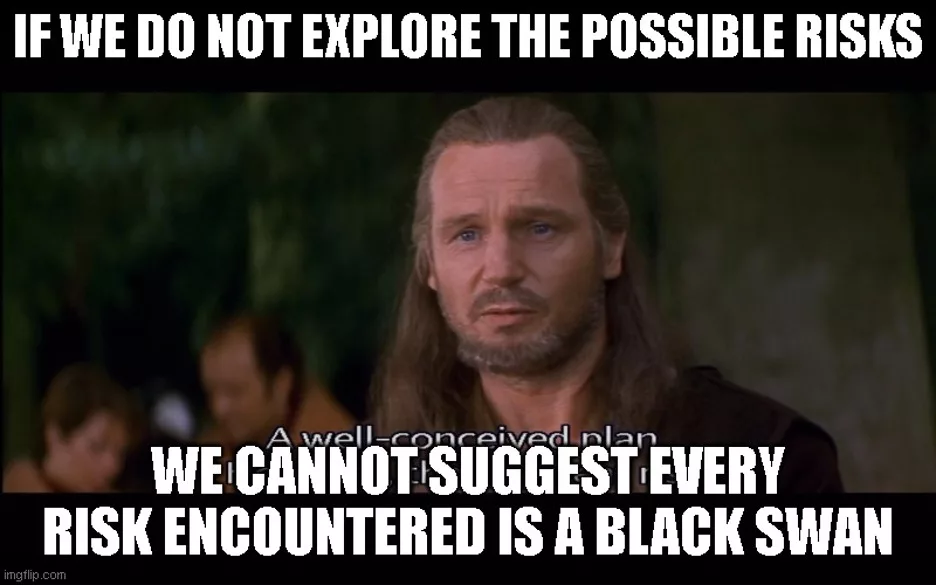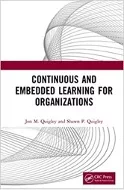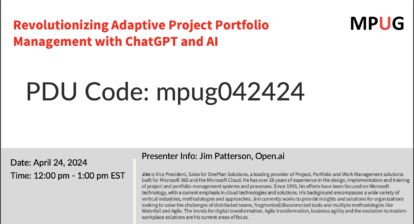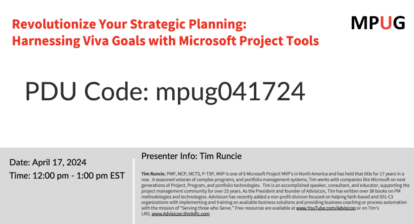Projects and Risk
A significant role of the project manager is to identify and manage the risks associated with project objectives. This does not suggest that this is only the project manager’s responsibility. However, it is their responsibility to get the team effectively engaged.
When creating an overview of risk management, we list and describe the processes we will go through to understand and respond to potential risks. This approach is designed to evoke, prioritize, define, and invoke a productive response to risk. Risk management is essential, but as we will see, emerging and sudden risk events (Black Swan events) do not necessarily fit nicely into this formal approach. In our upcoming book, Risk Management Handbook: Managing Tomorrow’s Threats, we outline a process that consists of the following areas:
- Identify – what can go wrong with the project and project objectives?
- Analyze – which are the most likely or most severe of these problems, including interactions of potential risk events?
- Plan – what responses can we create to mitigate or eliminate these risks?
- Track – constantly monitor these identified risks (metrics) and look for emerging events.
- Control – exert defined plans to control the risks and reduce the impact of the risk.
- Document – record our plans, emerging events, and responses.
What is a Black Swan in Risk Context?
The Black Swan issue arises from the second-century Roman poet Juvenal’s Satire VI. On this telling, Black Swans were presumed not to exist, and the phrase “rara avis in terris nigroque simillima cygno” (“a rare bird in the lands and very much like a Black Swan”) was common. [1]
How do we predict things with which we have no experience?
What a Black Swan is Not
We have seen projects encounter situations that could easily have been predicted, yet the project manager and executives are shocked by this outcome. Black Swans are not things we could have thought would occur but rejected, avoided, or produced a suitable response. Some things are predictable even if we have not encountered them in the past. This is the reason for engaging the project team and stakeholders in uncovering those things that may present risks to the project — the identification part of the risk management process. If we neglect this part of the process or perform it haphazardly, we should expect the consequences we reap.
We may be surprised by these events, but if we could have predicted it, then it is not a Black Swan. In our experience, we have seen quite a few times (I know, anecdotal) when a risk happens, and the project manager and team respond, “Who could have predicted this?”
[1] Black Swan theory. [Wikipedia web site]. Available at: https://en.wikipedia.org/wiki/Black_swan_theory#cite_note-etruscan_swan-3. Accessed 25 Nov 2020

What Makes Predicting Black Swans Difficult?
Black Swan events are rare and statistically improbable. Traditional risk management approaches are often based on historical data and probabilities. Black Swans do not have a significant historical precedent, making them difficult to account for in risk assessments. Given these limitations, we can see that with no historical precedent or personal experience, prediction of these events will be nigh impossible. This may seem to contradict the previous section, but it is not so. If we do not explore the possibilities, everything we encounter will undoubtedly surprise us. Even if we perform all measures of diligence as we should, we may still encounter a Black Swan event. The nature of the Black Swan is that we cannot imagine it unless we are very imaginative. We may also consider an event that would be a Black Swan and dismiss it as our experience would tell us that will never happen.

How to Identify Possible Black Swan Events
I won’t blow smoke here; the easiest way to identify Black Swan events will be a backward look, post-occurrence. The only way to see these things clearly is through hindsight. However, it is prudent to do what we can to predict Black Swans, especially those that pose the most difficulty for our effort.
10 Steps to Identify Potential Black Swan Events for Your Risk Plan
1. Brainstorming: Gather a team of subject matter experts (SME) and stakeholders involved in the product development. Hold a brainstorming session to generate a list of potential Black Swan events. Encourage participants to think creatively and consider events that are unlikely but could have a profound impact on the product and its success.
- Remember there are no wrong ideas, and don’t judge ideas in this session. Worry about sorting these out later.
- Encourage lateral thinking – viewing the workspace from a new or unusual perspective.
- There are many other approaches than conventional brainstorming to uncover unpleasant potentialities.
- Do not quickly dismiss potential risks identified by team members.
2. External Factors: Consider events that could arise from external factors such as regulation changes, geopolitical events, economic crises, natural disasters, or technological breakthroughs. These events might not directly relate to your product but could still disrupt its development, production, or market reception.
- Extreme weather conditions and natural disasters are becoming more frequent. Some areas of the globe are experiencing phenomena at a location or magnitude that is unprecedented for that area.
- Covid – enough said.
3. Technological Advances: Consider how emerging technologies or unexpected breakthroughs in related fields could affect your product. For instance, a sudden technological advancement that competes with or complements your product might significantly alter the market landscape.
- Technology advances at unbelievable rates and understanding the technology and its application requires time.
- Technological change can make our product obsolete quickly.
- Application of new technology can come with areas we had not known as we were not fully aware of the extent of the new technology application (see technology readiness level).
4. Market Shifts: Analyze potential market trends, consumer behavior, or industry dynamics shifts. Consider how sudden changes in demand, competition, or customer preferences could impact your product’s viability.
- Recently, automakers are pausing the production of EVs due to low sales, increased costs, and consumer spending on new vehicles.

5. Supply Chain Disruptions: Identify vulnerabilities in your supply chain that could be exploited by unforeseen events. For instance, disruptions in key suppliers, geopolitical tensions affecting shipping routes, or sudden shortages of crucial raw materials.
- Global supply chains are often strained in recent times: costs, labels, weather.
6. Regulatory Changes: Explore possible changes in regulations, standards, or compliance requirements that could affect your product’s development, production, or distribution. A sudden regulatory shift could result in delays, increased costs, or even render the product non-compliant.
7. Unforeseen Customer Reactions: Consider how customers might react unexpectedly to your product. Consider extreme positive or negative reactions that could impact demand, reputation, or other product lifecycle aspects.
8. Financial and Economic Events: Look at potential economic downturns, currency fluctuations, inflation, or other financial crises that could impact on your product’s pricing, production costs, or overall market reception.
- Recently, as reported in the news, several construction projects in the IT and EV industries have been placed on hold or canceled due to current and possible future economic conditions.
9. Legal and Intellectual Property Issues: Consider the possibility of legal disputes, patent challenges, or unexpected intellectual property conflicts that could hinder your product’s development or market entry.
10. Cultural and Societal Changes: Reflect on broader cultural or societal shifts that could influence the perception or acceptance of your product. Changes in values, social norms, or public opinion could have significant consequences.
Remember that identifying Black Swan events aims to prepare your risk plan to handle the unexpected. While it is impossible to predict every specific event, the exercise will help you build a more resilient strategy and develop contingency plans to mitigate the impact of unexpected disruptions.
Poet and essayist Ralph Waldo Emerson says, “Every minute you spend in planning saves 10 minutes in execution; this gives you a 1,000 percent return on energy!
Preplanning and Responding
Here are some actions to consider for preplanning and responding to a Black Swan:[1]
- Just as with any other project risk, establish mitigation ideas.
- Establish an immediate response plan to limit the impact size before a formalized plan is developed.
- Know how and when to apply your resources during an event.
- Incorporate outside perspectives and experiences for responding to such an event.
- Present the strategy to the sponsor and steering committee to help identify weaknesses before the Black Swan does.
- Develop risk recognition criteria to know when and how to respond.
- Identify team members as the response team who will assess the situation and understand the risks faced to initiate the correct response quickly.
- Document critical assumptions throughout this process.
- As the Project Plan is a living document, the plan for the potential Black Swan should be treated the same, to be reviewed and updated as needed.
- Should a Black Swan event occur, a post-mortem should be conducted to capture lessons learned and any training opportunities for future projects.
[1] Preparing for a Black Swan Event | ERM – Enterprise Risk Management Initiative | NC State Poole College of Management (ncsu.edu) Accessed 25 Nov 2020
Related Articles
Risk Identification Techniques and How to Brainstorm Well
Fundamentals of Project Risk Management Framework
Five Risk Management Best Practices for Project Managers
Elevate your project management skills and propel your career forward with an MPUG Membership. Gain access to 500+ hours of PMI-accredited training, live events, and a vibrant online community. Watch a free lesson and see how MPUG can teach you to Master Projects for Unlimited Growth. JOIN NOW







